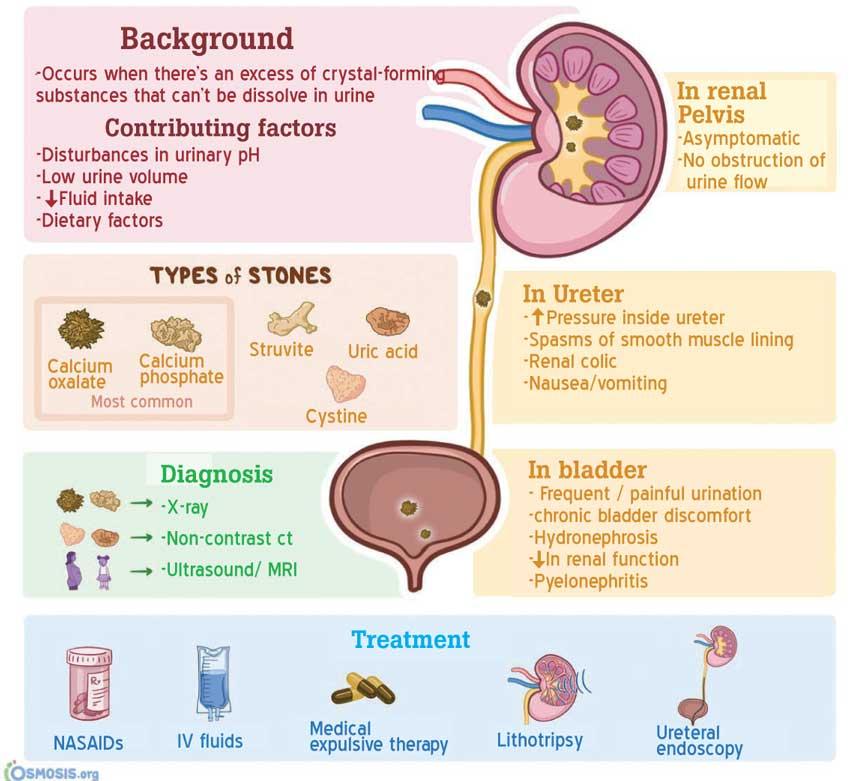06 Aug 2021 - {{hitsCtrl.values.hits}}

 Do you know that human urine can form stones and it’s one of the commonest conditions affecting both males and females in Sri Lanka?
Do you know that human urine can form stones and it’s one of the commonest conditions affecting both males and females in Sri Lanka?
Our urinary system consists of kidneys, ureters, urinary bladder and urethra. The kidneys form urine which is carried to the urinary bladder through narrow tubes called ureters. The urinary bladder temporarily stores the urine and carries it outside through a tubular structure called Urethra.
Disease conditions can occur in any part of urinary system and in today’s Health Capsule we are going to shed light on urinary stone disease, a common yet an important entity which could lead to permanent kidney damage if ignored or improperly treated.
“USD (Urinary Stone Disease) is a condition which indicates the presence of stones made up from the minerals of urine within the urinary tract,” explains Dr Nishantha Liyanapathirana, Consultant Urological Surgeon. Most of these stones are made of minerals of calcium (Eg, Calcium oxalate and calcium phosphate), but in a smaller percentage they could consist of constituents such as uric acid and cysteine. Urinary stones are generally formed in the kidneys, but can be found anywhere in urinary tract.
Prevalence and risk factors
“The prevalence of USD is similar to diabetes, affecting 1 in 11 people in their lifetime. As a temperate country with a tropical weather Sri Lankans are inherently more prone for USD, since the major risk factor for stone formation is chronic dehydration” underscores Dr Liyanapathirana.
This is mainly due to evaporation of fluid from the body making our urine concentrated to a point where minerals of urine become tiny crystals and stick together to form a stone. Recurrent episodes of urine infections and various causes of obstruction of the urinary tract could accelerate the stone formation. Additionally, the number of patients with stones has nearly doubled over the past 15 years owing to the increasing incidence of other risk factors including high blood cholesterol, obesity and diabetes
Presentation
“Urinary stones are well-known to cause severe pain. However a stone forming inside the kidney may be completely asymptomatic until the latter stage which can manifest as a pain in the loin area. Nevertheless, this can silently cause significant damage to the kidney during that period. In contrast an excruciating pain in the loin region which runs down to the lower abdomen is typically experienced when a stone drops down and obstructs the ureter tube. It’s more often associated with bouts of vomiting and may be accompanied with passing red colour urine due to bleeding in to the urinary tract caused by the stone obstructed” says Dr Liyanapathirana.
This is referred as ureteric colic and often requires hospital admission for pain relief. Occasionally stones develop inside the bladder which manifest as symptoms of difficulty and pain while passing urine due to the obstruction of the urine outflow.

Different types of Urinary stones
Diagnosis
According to Dr Liyanapathirana, the widespread availability of many modalities of investigations, diagnosis of USD is quick and accurate in the modern day. Urological surgeons could request basic tests like urine analysis and X-rays of GU tract as well as more advanced, imaging tests such as CT scans for accurately assess and locate the stones.
Interventions
Treatment of urinary stones depends on location and size of the stones and their complication. Most of the larger stones formed inside kidneys need interventions. On the other hand stones causing obstruction to ureters or kidneys need a careful evaluation before proceeding with treatment. They could sometimes be treated with oral medication to expel with urine, but this needs careful follow-up to reassess the situation. If the stones are too large or unlikely to pass with the medications or complicated with infections or kidney impairment an urgent surgical intervention is always recommended.
In this modern era stones developed at any part of the urinary tract are managed with endoscopic or telescopic surgeries by the urological surgeons. Kidney stones are now effectively treated with keyhole surgery called Percutaneous Nephrolithotomy (PCNL).
Gone are the days of painful open surgeries with cuts and scars. Laser and ultrasonic energy are used during procedures to break the stones into dust pieces, which warrants almost pain-free outcome allowing the patient to return to routine work within a day or two.
Complications
“Apart from the crippling pain urinary stones could cause serious complications if not assessed and treated properly. This includes infections of urinary tract which may at times lead to serious life threatening condition” says the doctor.
Stones obstructing kidneys and ureters could cause significant damage to the kidneys if not attended on time. In a worst case scenario this may be permanent, needing advanced therapies like dialysis and even renal transplantation.
Prevention
Since dehydration plays a main role we generally advice to have at least 3 litres of fluid per day if one is at risk of USD. Also follow these tips:
Limit high salt intake.
Avoid high calorie processed food and excessive animal protein intake.
Take regular exercises and maintain ideal body weight.
Not every stone is alike, thus a proper assessment and early treatment could avert a possible kidney damage.
20 Dec 2024 9 hours ago
20 Dec 2024 20 Dec 2024
20 Dec 2024 20 Dec 2024
20 Dec 2024 20 Dec 2024
20 Dec 2024 20 Dec 2024